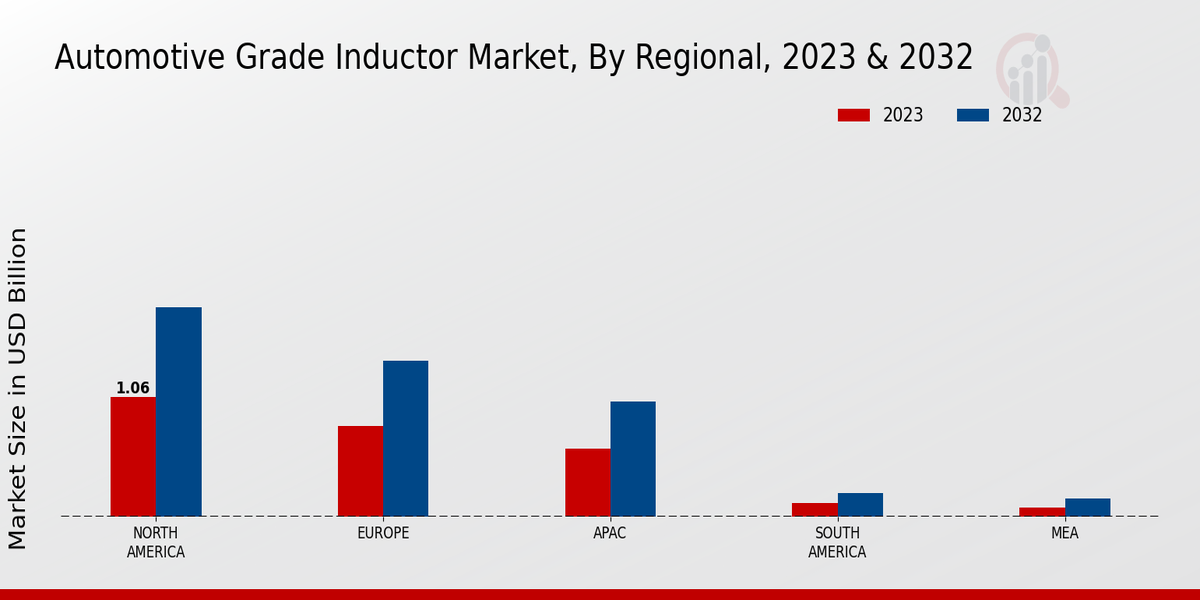Growing Focus on Fuel Efficiency
The Global Automotive Grade Inductor Market Industry is also driven by the growing focus on fuel efficiency among automotive manufacturers. As consumers become more environmentally conscious, there is a heightened demand for vehicles that offer better fuel economy. Automotive-grade inductors play a vital role in optimizing power management systems, thereby enhancing overall vehicle efficiency. This trend is further supported by regulatory pressures aimed at reducing carbon emissions. Consequently, the market is poised for growth, with a projected compound annual growth rate (CAGR) of 6.08% from 2025 to 2035, indicating a robust demand for inductors that facilitate fuel-efficient technologies.
Regulatory Compliance and Standards
Regulatory compliance and standards play a crucial role in shaping the Global Automotive Grade Inductor Market Industry. Governments and industry bodies are establishing stringent guidelines to ensure the safety and reliability of automotive components. These regulations often mandate the use of automotive-grade inductors that meet specific performance criteria. As manufacturers strive to comply with these standards, the demand for high-quality inductors is likely to increase. This trend not only enhances product reliability but also fosters innovation in inductor design and manufacturing processes, ultimately contributing to the market's growth and sustainability.
Rising Demand for Electric Vehicles
The Global Automotive Grade Inductor Market Industry is experiencing a notable surge in demand due to the increasing adoption of electric vehicles (EVs). As governments worldwide implement stringent emission regulations and offer incentives for EV purchases, manufacturers are compelled to enhance their product offerings. This shift towards electrification necessitates the use of high-performance inductors, which are crucial for efficient power management in EVs. The market is projected to reach 2.98 USD Billion in 2024, reflecting the growing importance of automotive-grade inductors in supporting the transition to sustainable transportation solutions.
Expansion of Automotive Electronics Market
The expansion of the automotive electronics market is a significant driver for the Global Automotive Grade Inductor Market Industry. As vehicles become increasingly equipped with electronic features, the demand for reliable and efficient inductors rises correspondingly. This growth is fueled by the integration of smart technologies, such as connected car systems and autonomous driving capabilities. The automotive electronics market is expected to witness substantial growth, thereby creating opportunities for inductor manufacturers. The increasing complexity of automotive electronics necessitates high-performance inductors, further propelling the market forward and ensuring its relevance in the evolving automotive landscape.
Technological Advancements in Automotive Electronics
Technological advancements in automotive electronics are significantly influencing the Global Automotive Grade Inductor Market Industry. Innovations such as advanced driver-assistance systems (ADAS) and infotainment systems require sophisticated electronic components, including inductors. These components are essential for ensuring reliable performance and energy efficiency in modern vehicles. As automotive manufacturers increasingly integrate cutting-edge technologies, the demand for high-quality automotive-grade inductors is expected to rise. This trend is likely to contribute to the market's growth, with projections indicating a market size of 5.7 USD Billion by 2035, highlighting the critical role of inductors in future automotive applications.



















